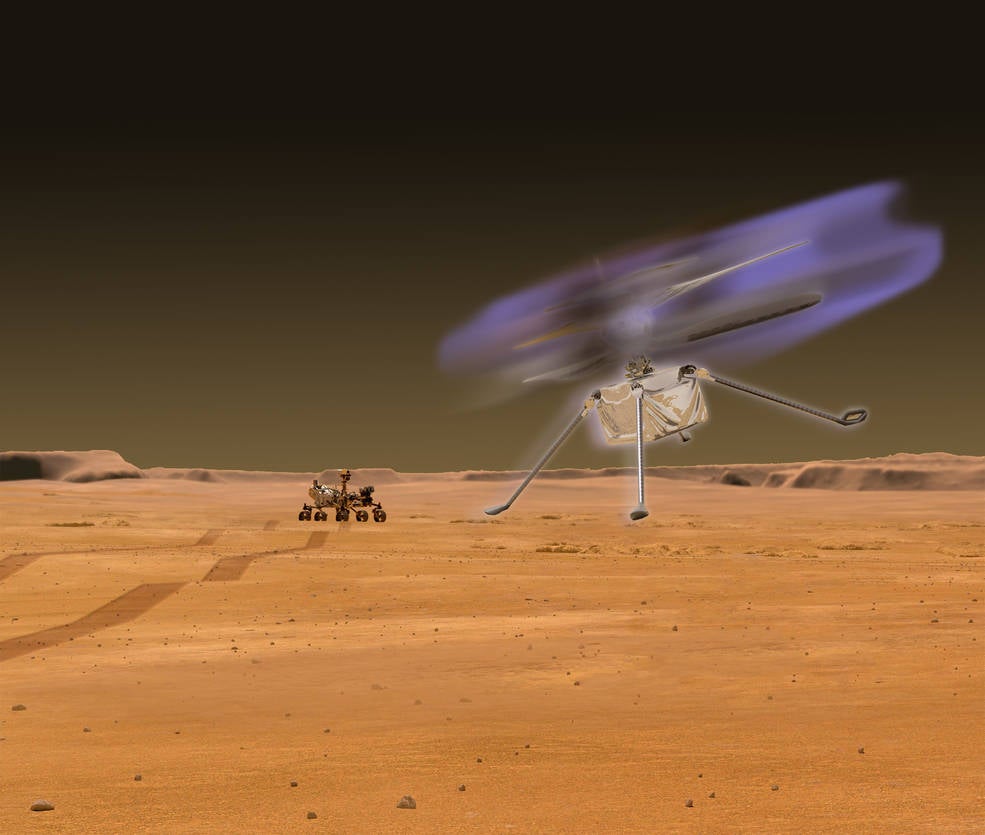Nasa says helicopters will start glowing on Mars
A drone’s whirring blades interacts with dust on the planet’s surface causing an ‘electron avalanche’

Helicopters flying on the Red Planet may glow in the dark due to a strange effect from the Martian atmosphere.
The whirling blades on drones sent to the alien world can cause tiny electric currents to flow in the air, according to a Nasa study.
This process is the same one that causes the corona on Earth, or the glow that is occasionally seen on aircraft on ships – otherwise known as Saint Elmo’s Fire.
“The faint glow would be most visible during evening hours when the background sky is darker,” said William Farrell of Nasa’s Goddard Space Flight Centre and the lead author on the new research. “Nasa’s experimental Ingenuity helicopter does not fly during this time, but future drones could be cleared for evening flight and look for this glow.”
He continued: “The electric currents generated by the fast-rotating blades on drones are too small to be a threat to the craft or the Martian environment, but they offer an opportunity to do some additional science to improve our understanding of an accumulation of electric charge called ‘triboelectric charging’.”
This kind of charging happens when friction is transferred between objects, similar to static electricity.
Nasa’s researchers found that as the drone’s blades spin they interact with tiny dust grains in the Martian atmosphere, and interacted more when helicopter was nearer the surface. As the blades impact the dust charge is transferred to create an electric field, building to higher levels until it reaches the point where it can conduct electricity.
This breakdown is more likely on Mars than it would be on other planets, such as Earth, because the Martian atmosphere is only one per cent that of our home planet.
On Mars, the molecules that make up the atmosphere are not as dense as on Earth, meaning the free electrons that cause conduction can accelerate to high velocities before hitting another molecule – reaching a point where they can cause an ‘electron avalanche’.
This can happen on Mars with a low electric field of around 30,000 volts per meter, while on Earth it would require about 3,000,000 volts per meter.
However, the researchers are keen to stress that this is simply a prediction; the actual effect may not be strong enough.
“In theory, there should be some effect, but whether the electron avalanche is strong enough to create a glow, and if any weak glow is observable during operations all remain to be determined in future drone flights on Mars,” says Farrell.
“In fact, one could even place small electrometers up near the blade and at the legs to monitor the effects of any charging. This kind of electrical monitor could be of both scientific value and provide critical input on drone health during the flight.”
Join our commenting forum
Join thought-provoking conversations, follow other Independent readers and see their replies
Comments
Bookmark popover
Removed from bookmarks